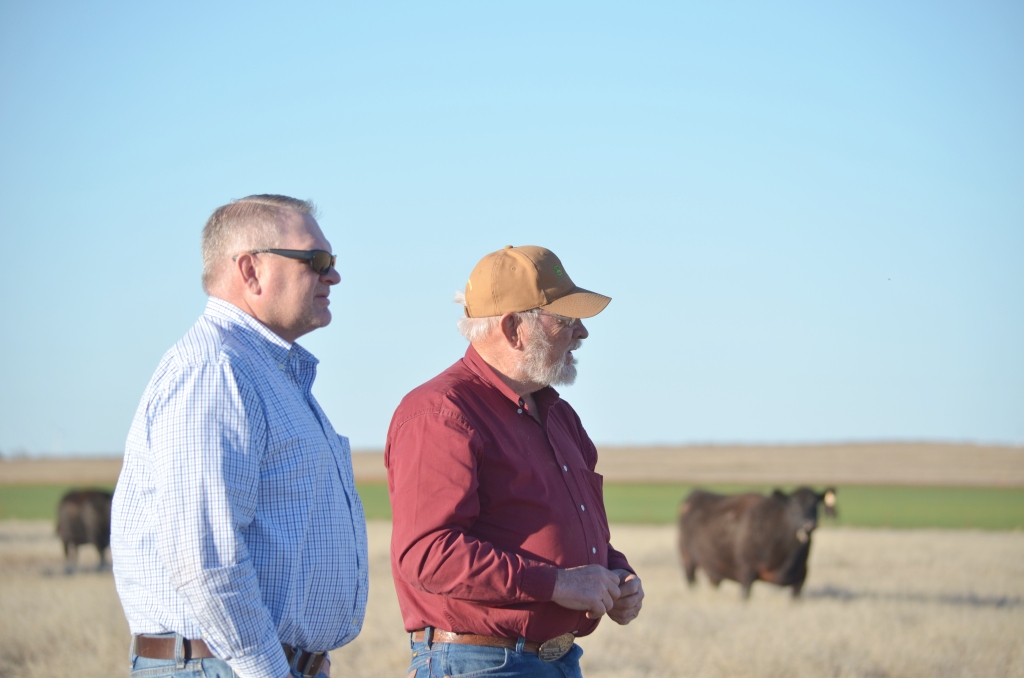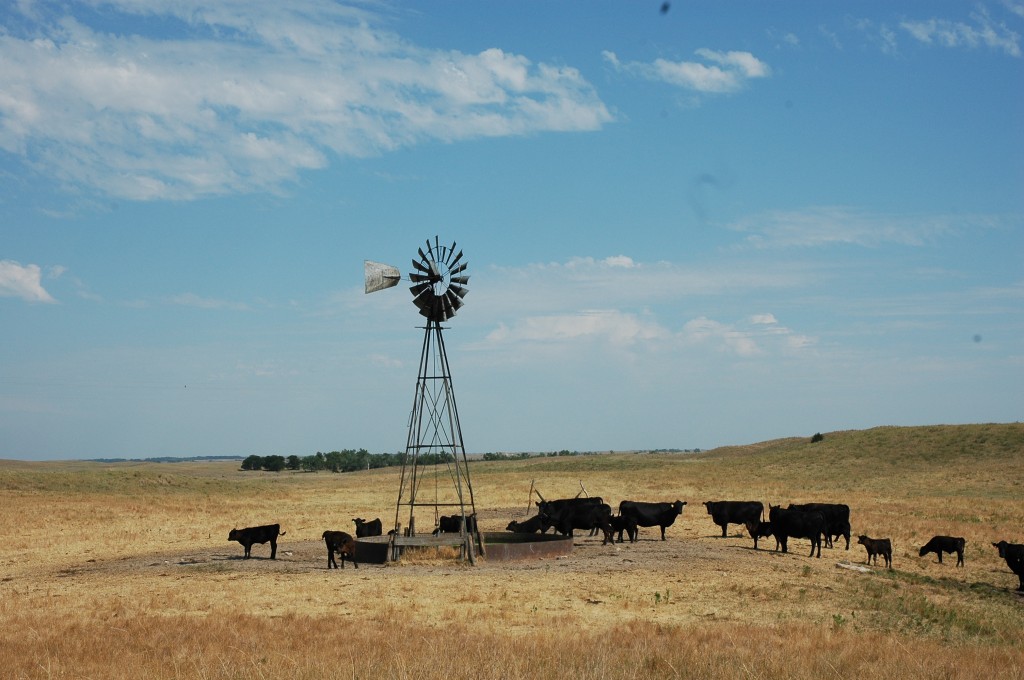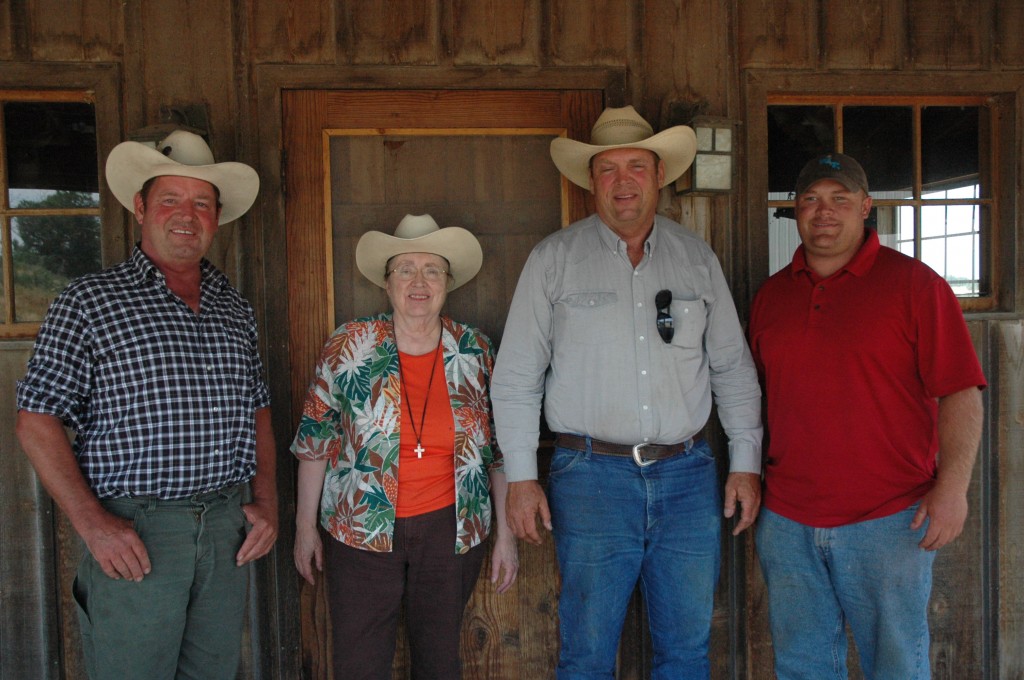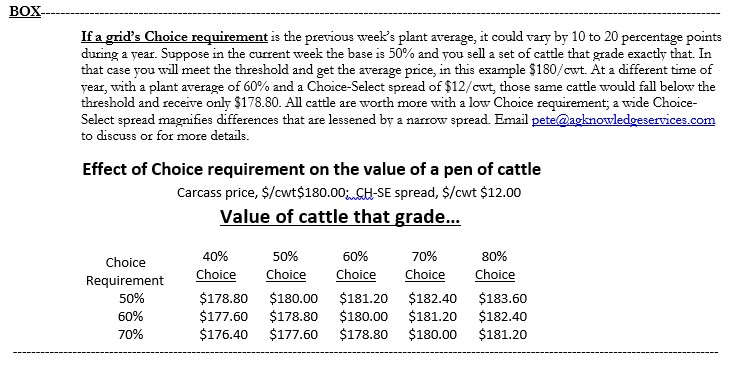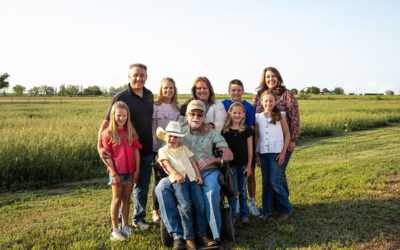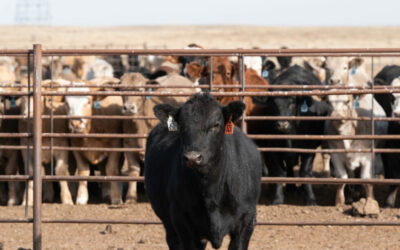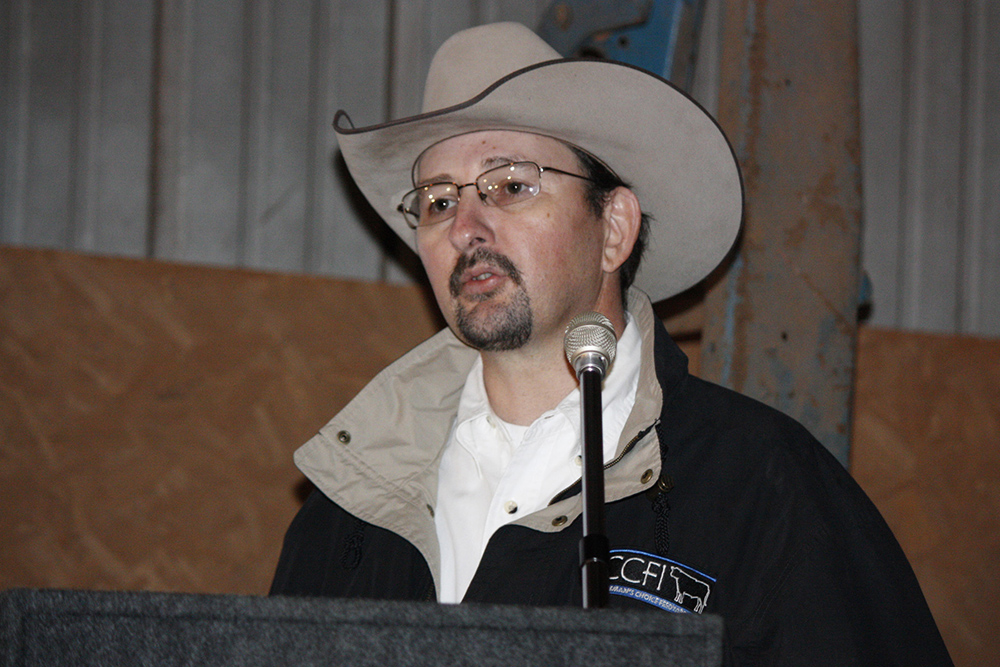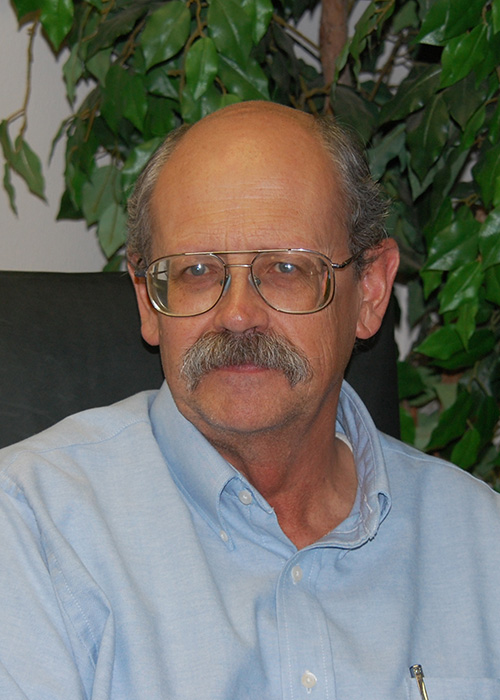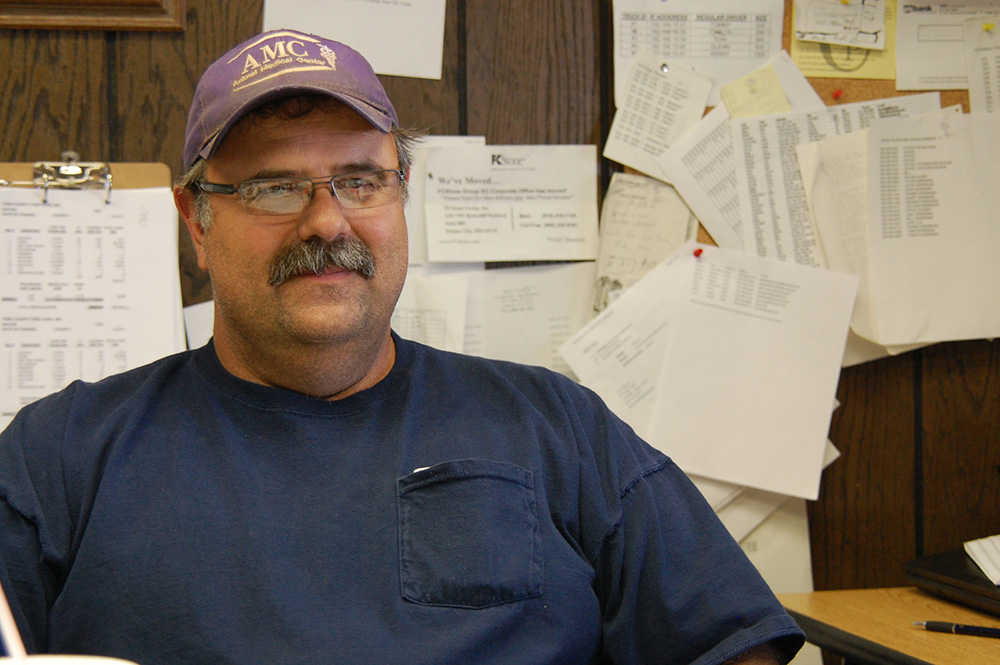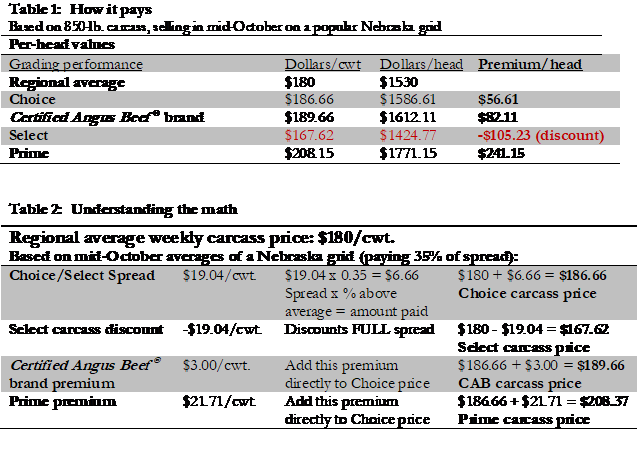
Doing what works
But among the miles of crop ground I found a father-son duo sticking out in a good way – raising quality cattle.
“Its very satisfying,” says Jim Richert, the dad. “It’s a lot of fun and I enjoy it.”
With a smile on his face, I see he enjoys talking about the cattle more than the crops. His eye for quality is also apparent.
“Not many people doing what we’re doing in the area,” he says. “Look around, this is corn ground. Ten years ago we were farming this, but turned it into grass for more cattle.”
It all started with Jim’s father. When an area of land didn’t have the best soil for growing crops, he turned it back to native pasture grasses for cows. Experience with that small section spurred Jim to believe grass and cattle could thrive here; even if his neighbors didn’t always think so.
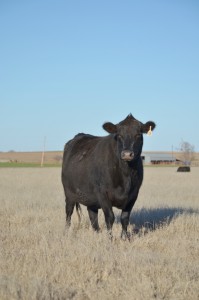 Turning cropland back to pasture would come under scrutiny, so Jim wasn’t going to raise just any type of cattle. He was going to focus on quality and premium markets. Then grid-based pricing took off in the late ’90s, adding extra incentive.
Turning cropland back to pasture would come under scrutiny, so Jim wasn’t going to raise just any type of cattle. He was going to focus on quality and premium markets. Then grid-based pricing took off in the late ’90s, adding extra incentive.
“When grids developed, then we really started concentrating on selecting sires for carcass traits,” he says. “Probably one of the best things we ever did. It’s amazing by doing that our premiums just keep getting better.”
The Richerts aren’t only selecting for carcass traits though. They’re production oriented and know each live calf can add or subtract from the bottom line. With a 60-day bull turnout they expect to have 80% of their calf crop within the first 30 days of calving season. Any open females don’t stay around. The cowherd has to be productive and their calves have to excel on the rail to earn their keep.
 In addition, for the last three years, the Richerts have incorporated using GeneMax genomic testing to help select replacement heifers. Jim gives Jay all the credit for introducing the technology.
In addition, for the last three years, the Richerts have incorporated using GeneMax genomic testing to help select replacement heifers. Jim gives Jay all the credit for introducing the technology.
“We’re looking at the numbers,” Jay says. “When it comes to selection and improvement, GeneMax® is a way you can get there faster.”
There are plenty of neighbors who question the cowherd.
“In this part of the state you’re not going to find many cowmen,” Jim says. “You know you got to stay with what works for you. The people that diversified what they’re doing in this area are the best off.”
So that’s what the Richerts are doing, and from what I could see, they’re gaining attention in all the right ways.
~Katy
Industry Information intern Katy Kemp is currently pursuing a master’s degree in ag communications from Oklahoma State University.
You may also like
You, Your Cows and Their Feed
Expert guidance from Dusty Abney at Cargill Animal Nutrition shares essential strategies for optimizing cattle nutrition during droughts, leading to healthier herds and increased profitability in challenging conditions.
Marketing Feeder Cattle: Begin with the End in Mind
Understanding what constitutes value takes an understanding of beef quality and yield thresholds that result in premiums and/or discounts. Generally, packers look for cattle that will garner a high quality grade and have excellent red meat yield, but realistically very few do both exceptionally well.
Kansas Ranchers Recognized for Sustainability Efforts
Kansas’ Wharton 3C Ranch thrives despite droughts, winning the CAB 2023 Sustainability award. The data-driven, quality-focused approach of first-generation ranchers, Shannon and Rusty Wharton, yields 100% CAB cattle. Their commitment to sustainability and industry collaboration sets a bright future for the cattle business.

